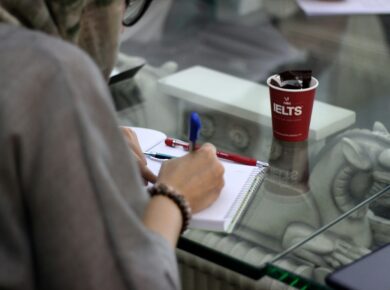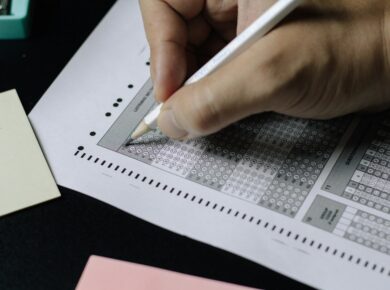The nation’s educational system has been affected by examination malpractice for a long time. It is unfortunate that academic certificates from African countries are worthless and are no more valuable than the paper they are printed on. Examination malpractice is seen as an illegal act that can ruin a student’s life.
What is examination malpractice?
What does examination malpractice mean? It refers to the act of cheating during examinations. Examination malpractice is any form of cheating before, during, or after the examination.
Examination malpractice appears in different forms: Plagiarism (stealing or passing ideas or words of another as one’s own; using any cheat notes; copying from a pre-prepared answer sheet; colluding with other students to get the right answer; copying from another student’s test; continuing taking the test even when the time is over, impersonation, furtive glances, illegal transfer of paper.
If one were to generalise, each action that will give one an unfair advantage may be considered examination malpractice.
The causes of the examination malpractice
Examination malpractice is caused by different factors in our society. The leading factors are discussed below.
1. Lack of preparation causes examination malpractice.
A few reasons might account for it, such as an unspecialized teacher who was not able to explain the subject properly, a lack of time (for example, if a student has a part-time job), and laziness.
The last one is a big issue – students are more eager to do something simpler than studying. There may also be a large population of students willing to go to higher institutions. So, students who are not doing very well will choose examination malpractice to get what they want.
2. Lack of time causes examination malpractice.
The lack of time also accounts for this heinous act. There are complex subjects such as Mathematics, Chemistry, and Physics that take a significant amount of time to explain properly.
Unfortunately, there is not enough time for me during the school period, so the curriculum is usually reduced to fit all other subjects. At times, students might not be able to absorb all the needed information from the shortened version of the subjects.
3. Parents cause examination malpractice.
Many parents aid their students in cheating during examinations or being involved in examination malpractice. Parents encourage the students to be involved in examination malpractice because they want the best for their children, and education is not an exception.
Some parents go the extra mile to bribe teachers instead of hiring a tutor, for example. The easiest option is not always the best choice; the parents have forgotten that.
4. Schools’ negligence causes examination malpractice.
Many schools prefer spending a lot of money assisting their students to pass examinations to buying books and equipment for libraries and laboratories.
Even though a lot of schools will not employ enough teachers to handle the subjects, they can recruit “mercenaries” to write for their students in the examinations.
The Evil Effects and Consequences of Examination Malpractice
Examination malpractice has a lot of negative effects and consequences which they affect our society these days. It has become the cankerworm that eats up the fabric in our society. Some of the consequences have been discussed below.
1. It could lead to expulsion.
A child who is caught engaging in examination malpractice could be expelled and eventually bring shame to his family and society at large.
Aside from expulsion, he could be imprisoned for several years, and when he is finally released, he would face difficulty getting a job, as no one would want to employ an ex-convict. This has led to an increase in the number of thugs we have in our streets today, perpetrating crimes.
2. It leads to final crimes.
The children who have cheated and were not caught would try to go the same easy way in life – they might stay lazy and unproductive. They will grow and end up as adults who cheat and copy instead of doing work on their own.
They will not have academic or moral values. Students who work hard and prepare for exams will become less confident and perhaps suffer from apathy.
They will see unprepared students who can easily pass the exams and think, “Why do I have to try hard and prepare if anybody can pass?”
3. It leads to misconduct.
Examination malpractice can lead to other areas of misconduct, such as robbery, cheating, stealing, etc. Examination malpractice may appear as the easiest and fastest way to earn money.
Way out and solutions to examination malpractice
There is no problem without solutions. There are several possible solutions to examination malpractice if our society is to be free from this heinous and nefarious act. Some of the solutions are discussed below.
1. Teachers must be paid high salaries.
If the teachers are paid a high salary, then there would be no need for corruption – properly trained teachers.
A highly skilled teacher will be able to cover a larger part of the syllabus to prepare the students well for examinations. We can remember that a hungry man is an angry man.
2. Guidance counsellors must be available.
The counsellors must be available to help the students with studying, choosing a career, and during holidays. They should learn more during the holidays.
3. Students should inculcate a reading culture.
Students should be thoroughly searched before the exam. They must be well-planned and prepared harder for their examinations. This option will help to avoid fraud.
4. Parents should avoid the payment of bribes.
Parents can discourage examination malpractice by avoiding the payment of bribes to special centres and counselling students whenever they have difficulties in their academics. There should be a reward for those who perform well so that other weak students can be encouraged.
5. Schools, too, should discourage examination malpractice.
The schools should provide the necessary facilities and equipment that will attract the students to read and learn instead of looking for dubious ways to pass.
Such facilities include modern laboratories, well-stocked libraries, conducive environments for learning, resources such as qualified and experienced teachers, and e-textbooks and reading materials. Read further on this page.









